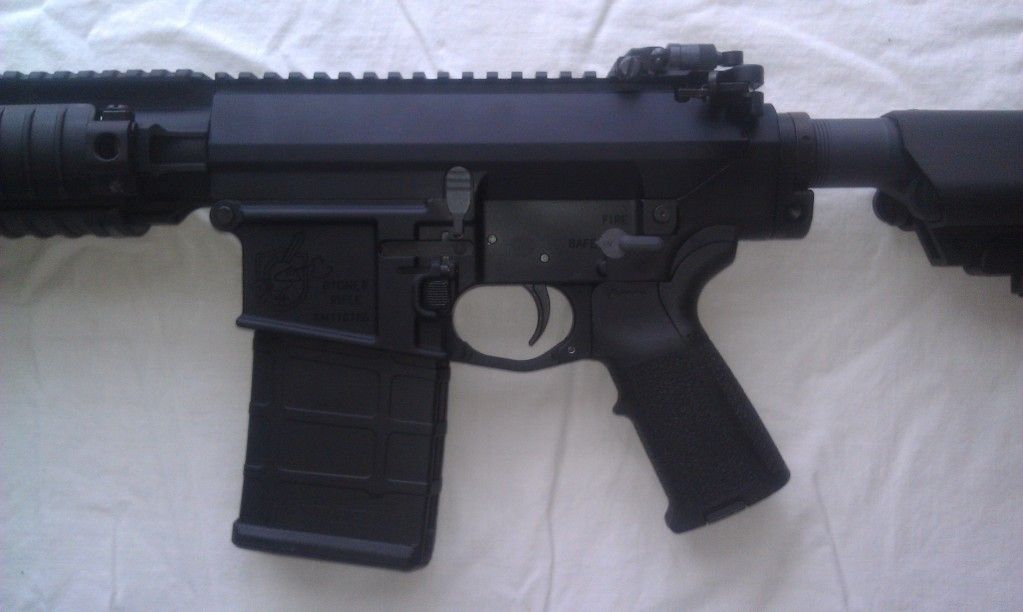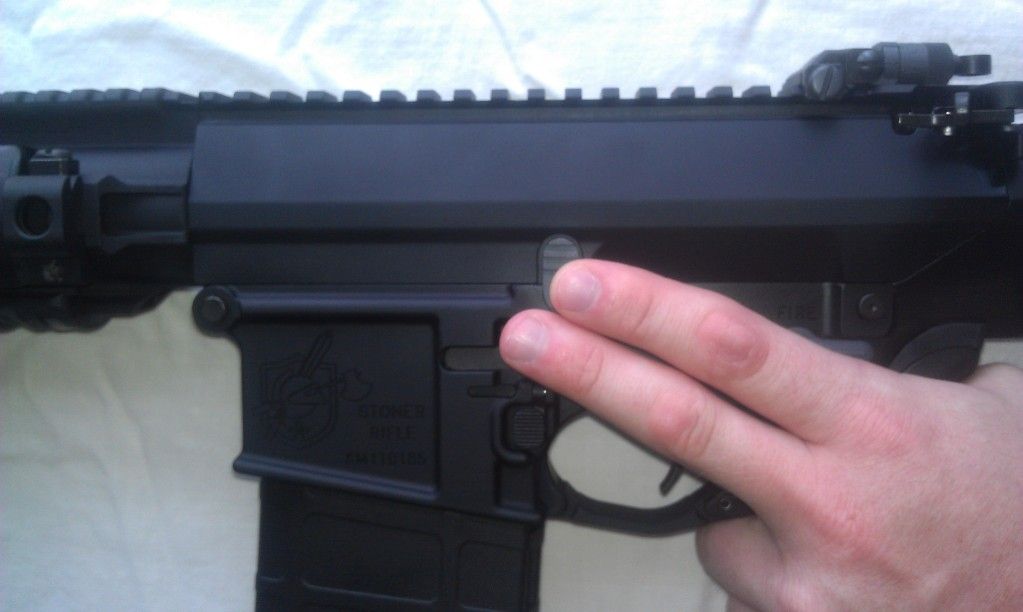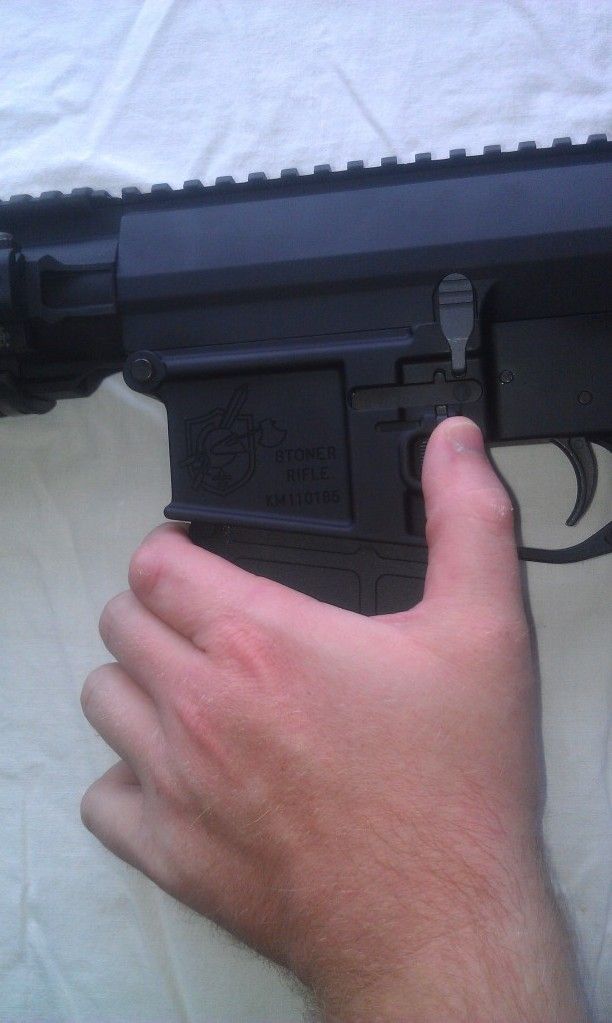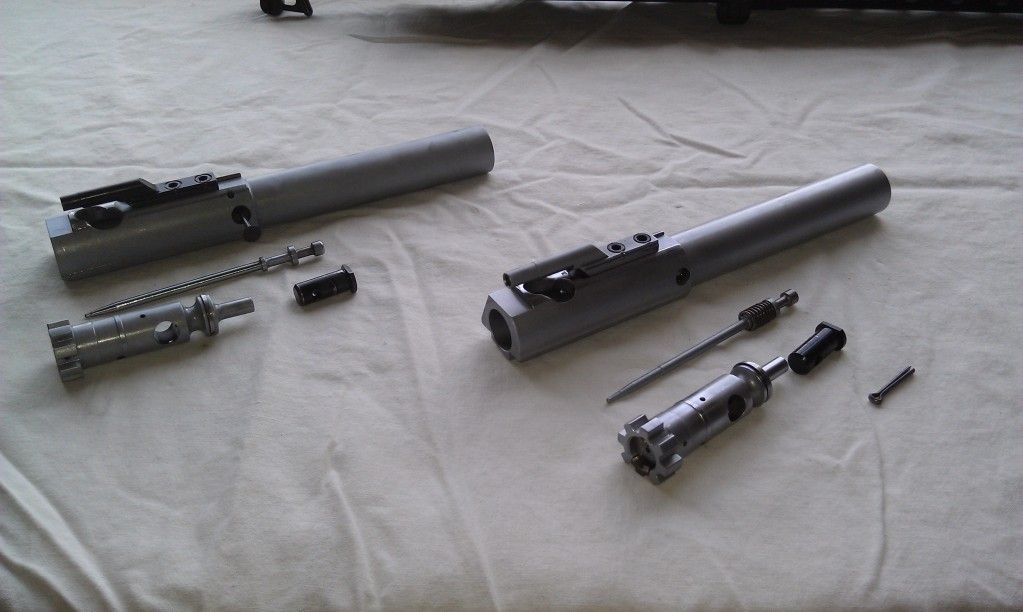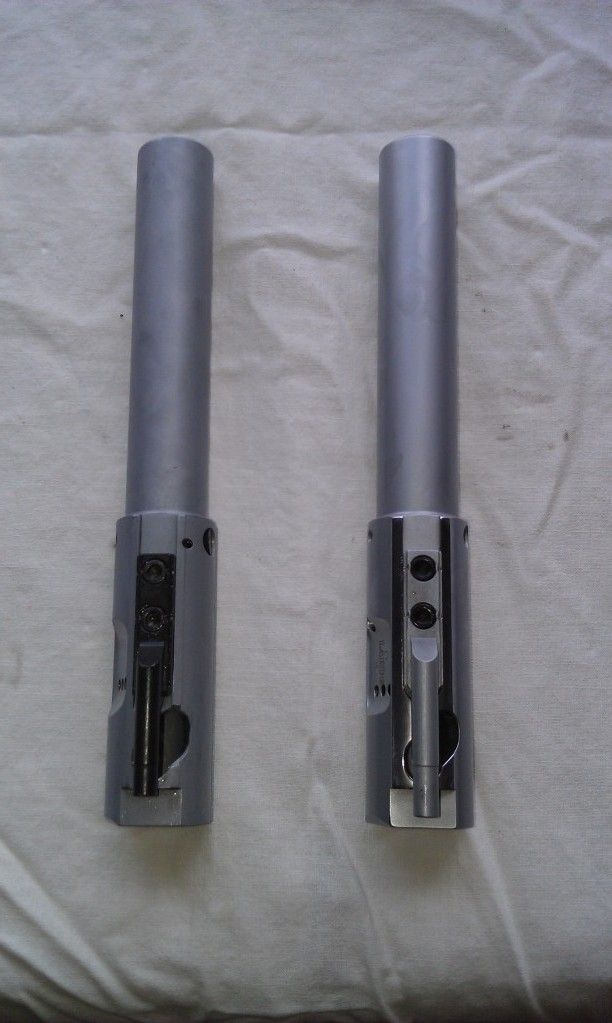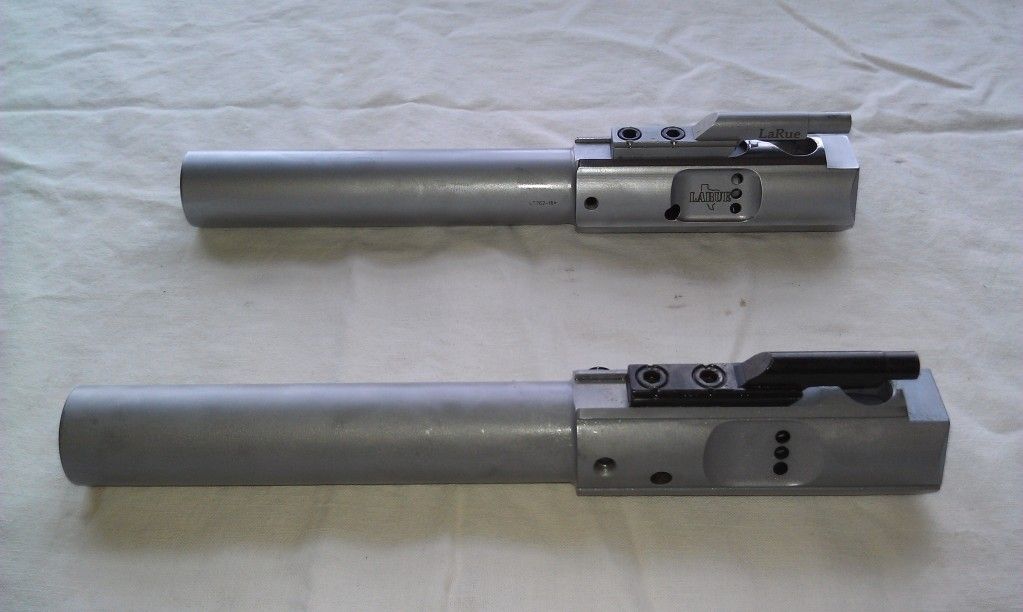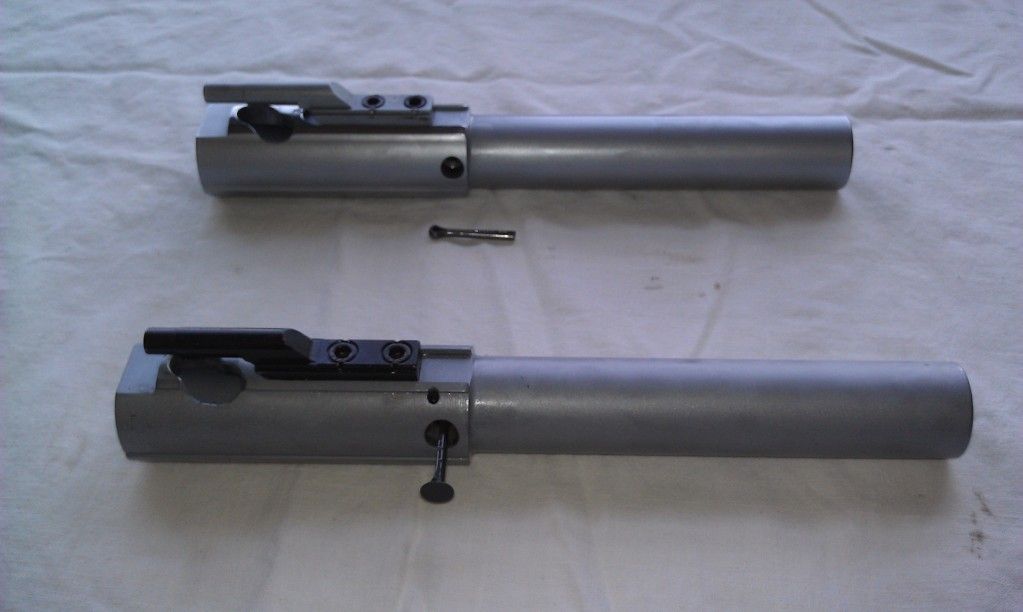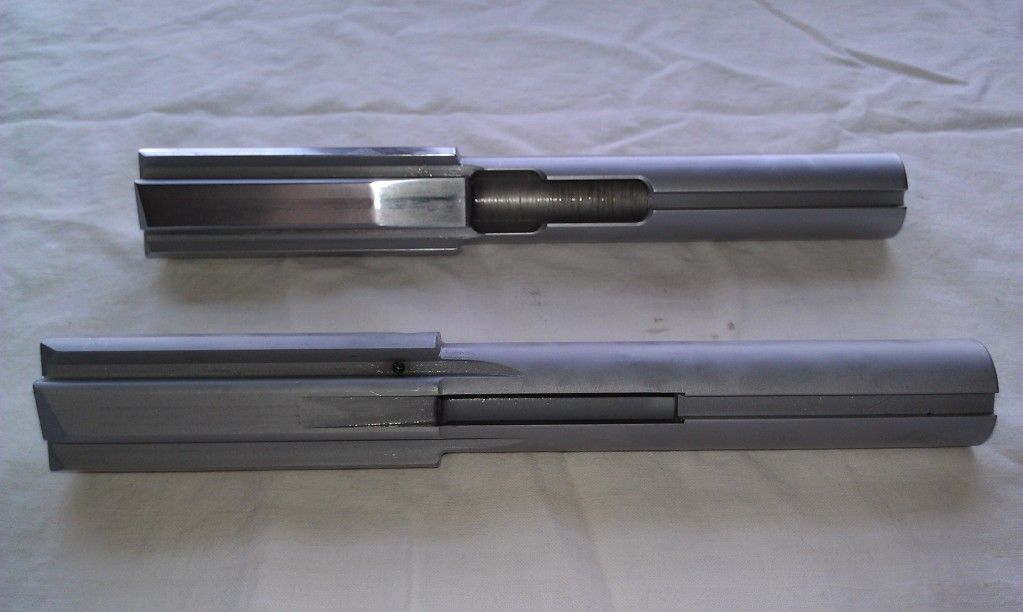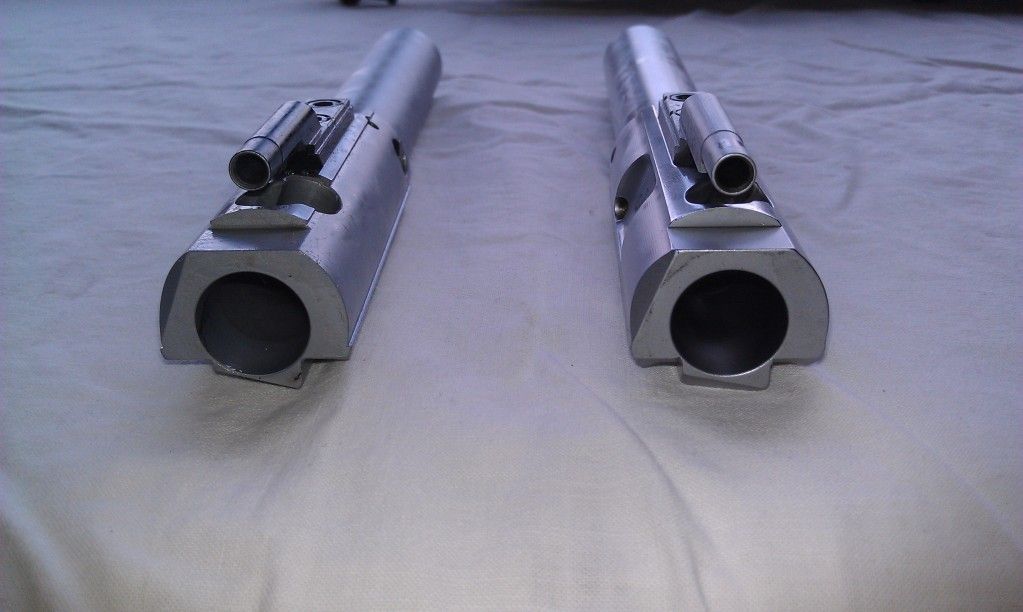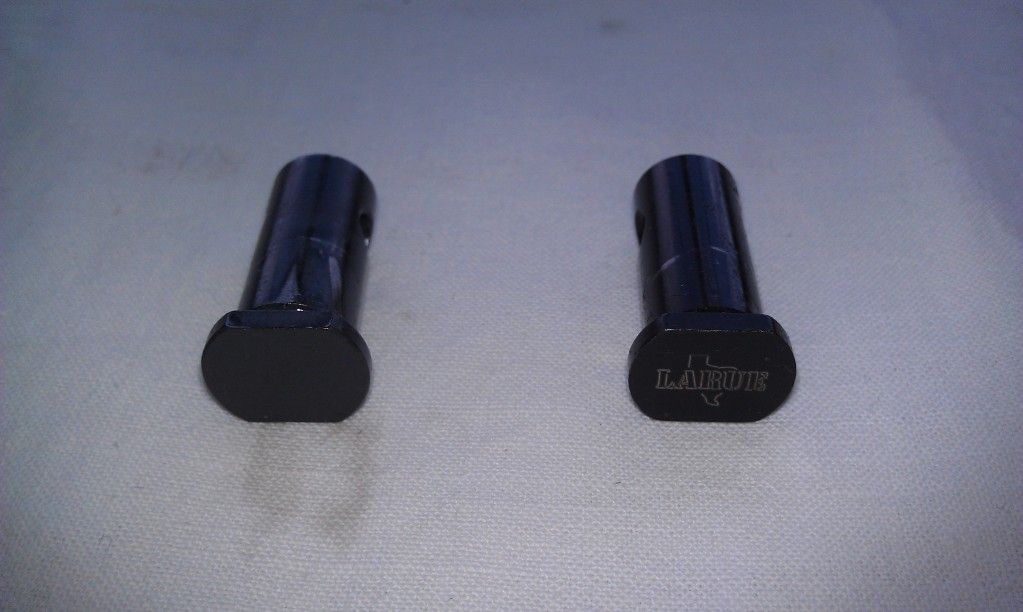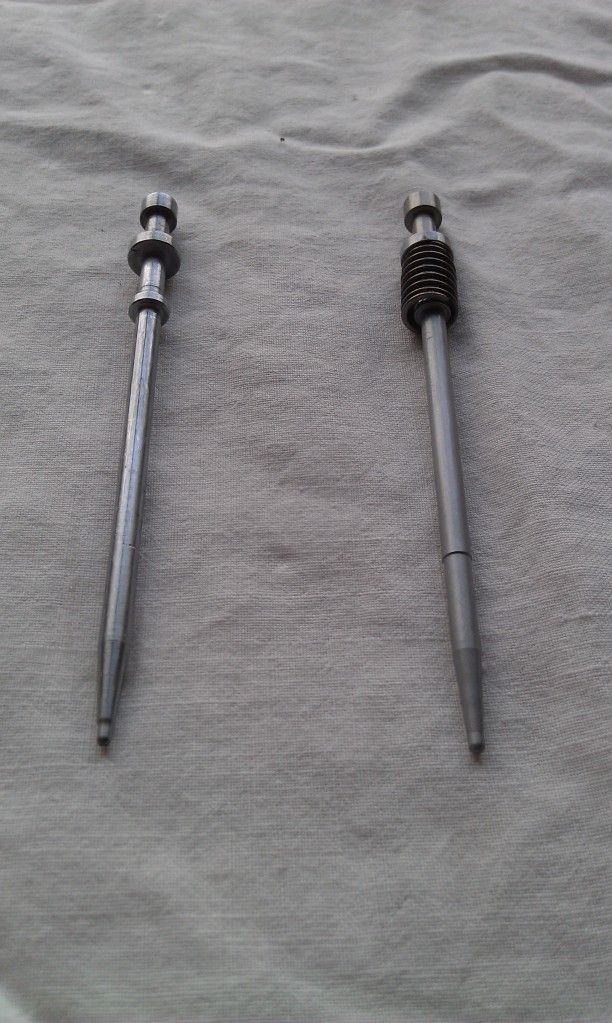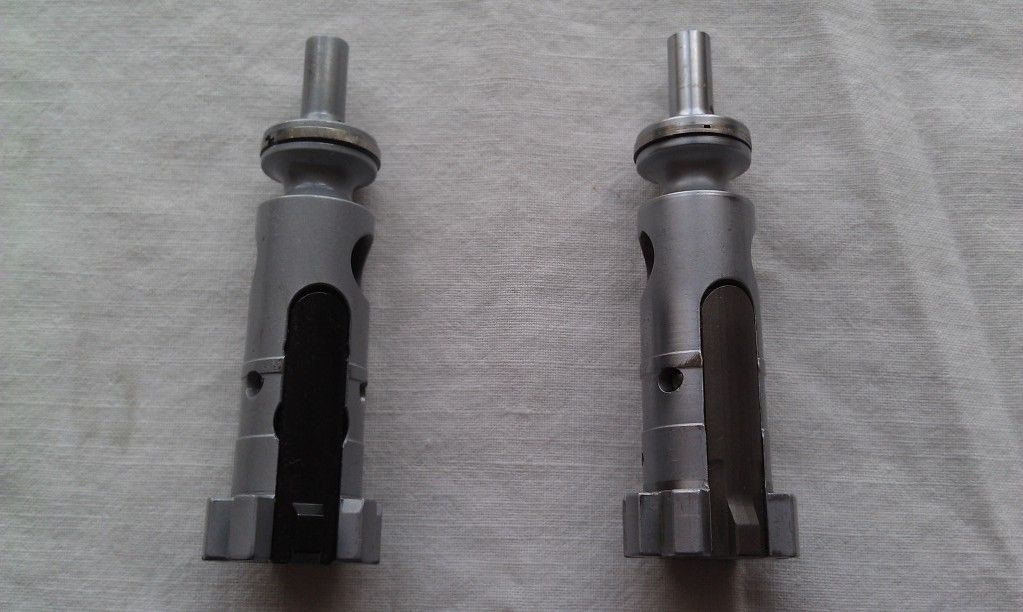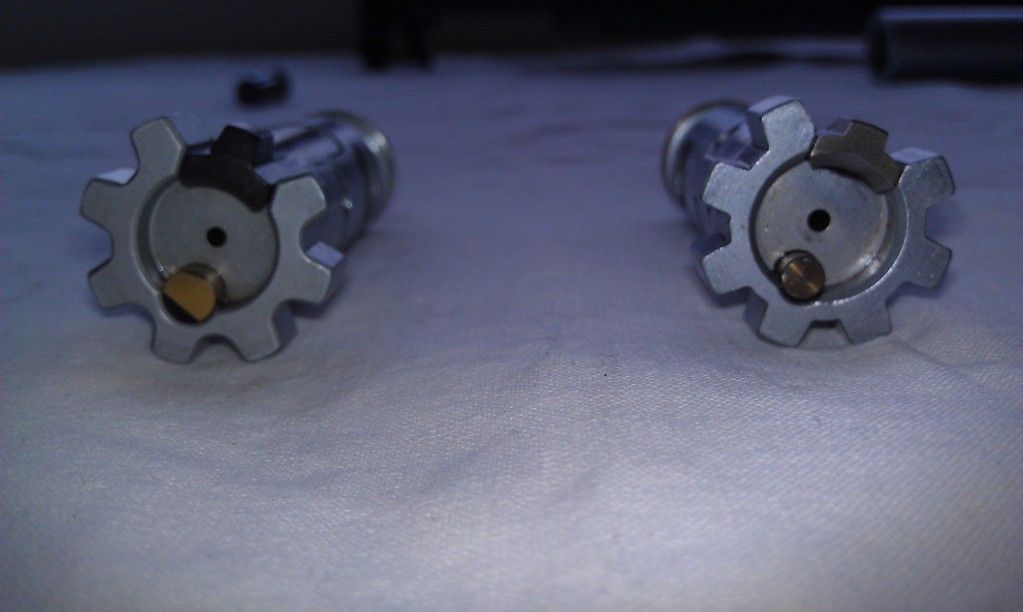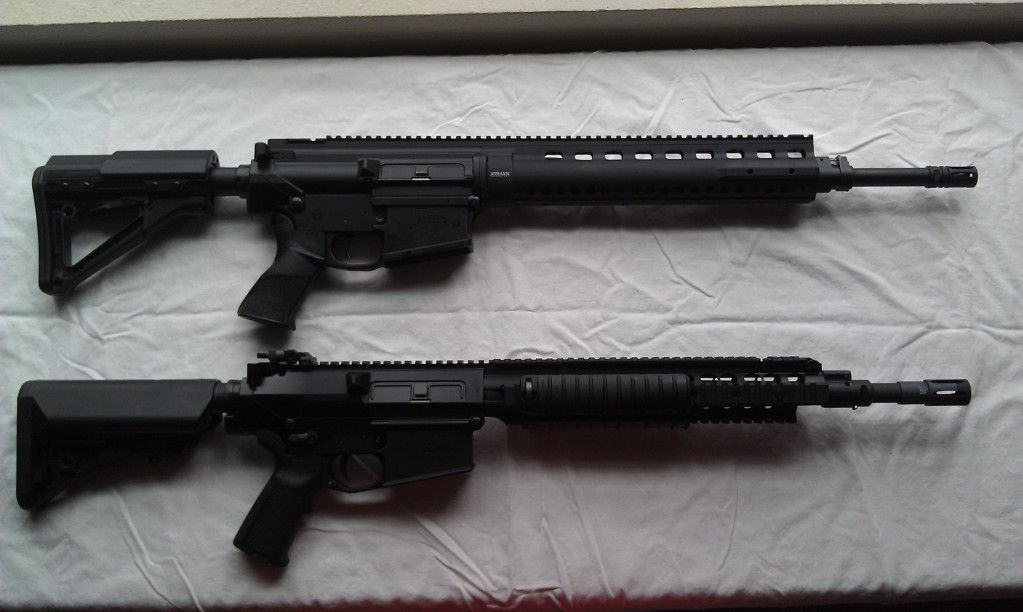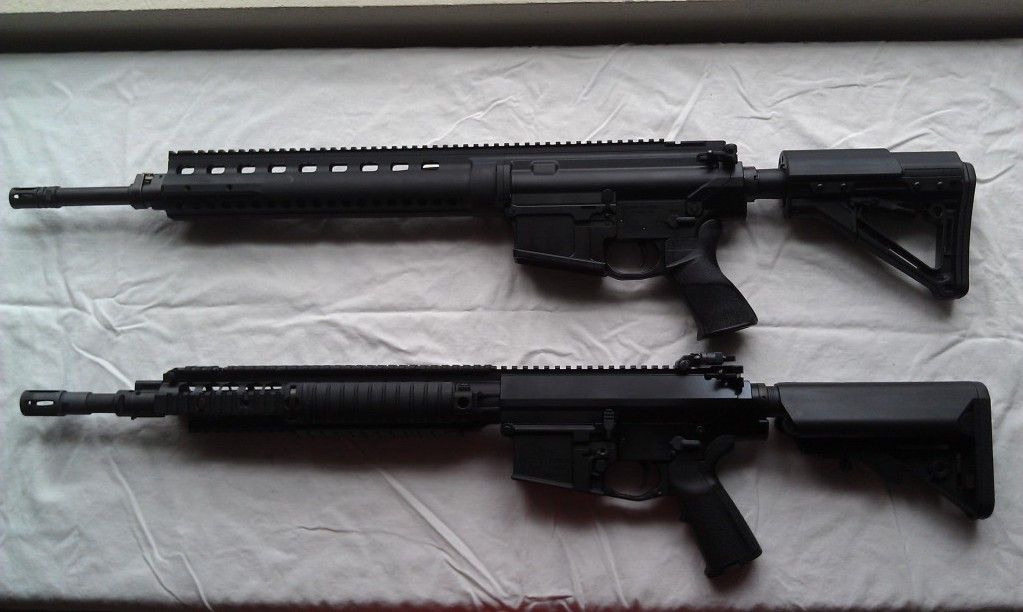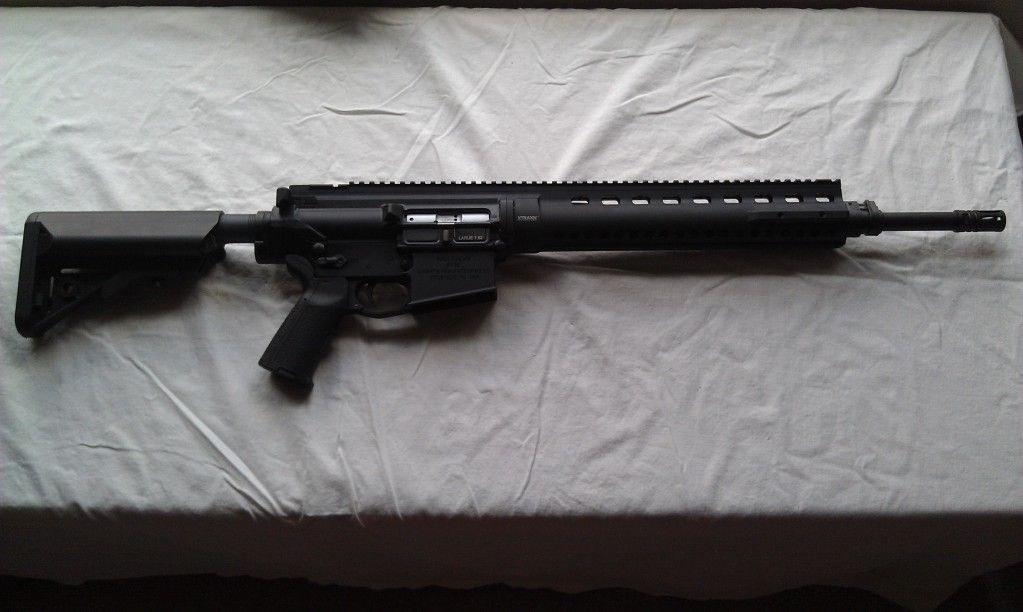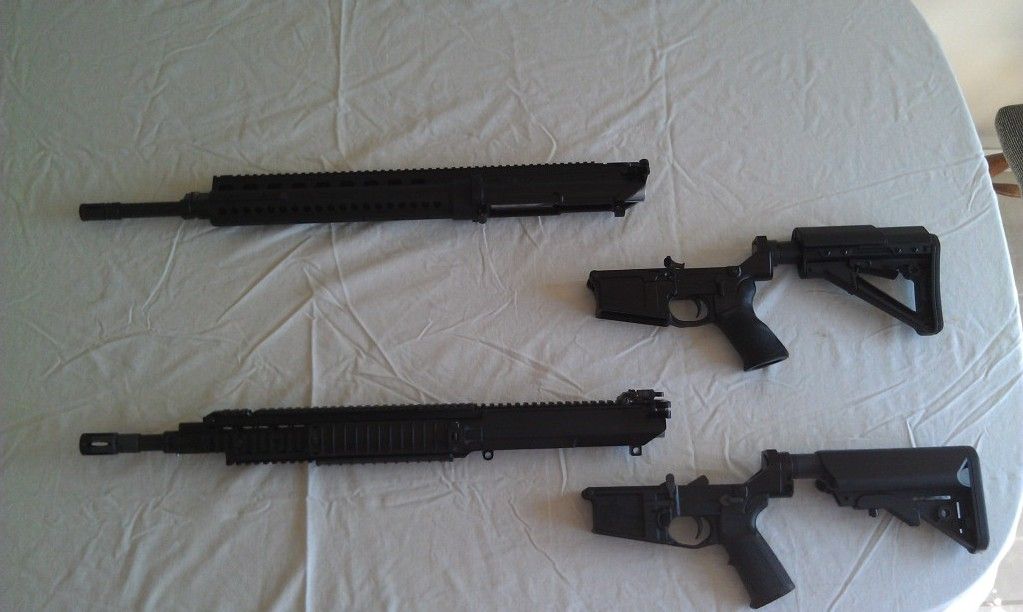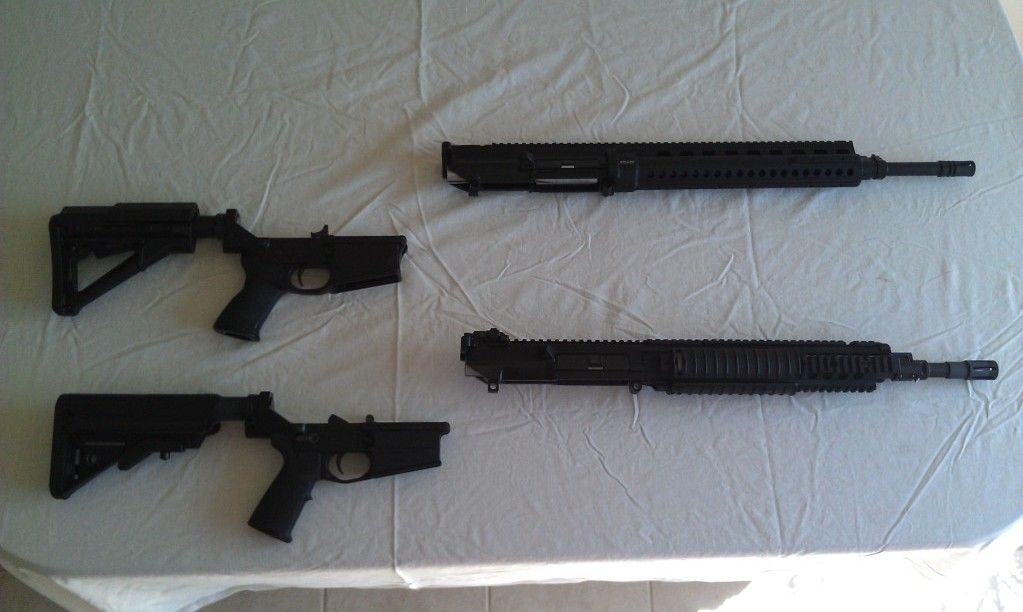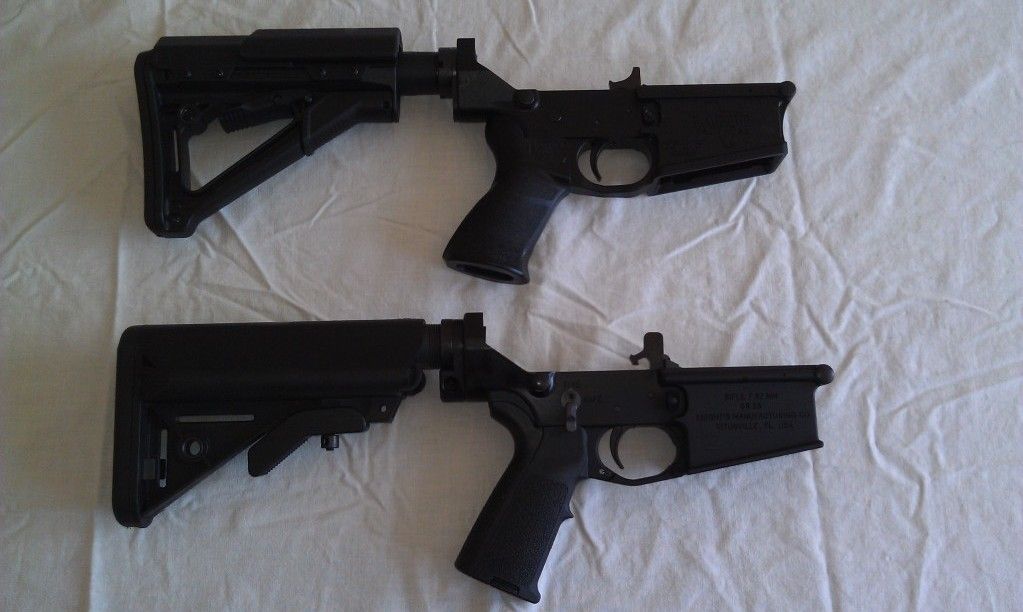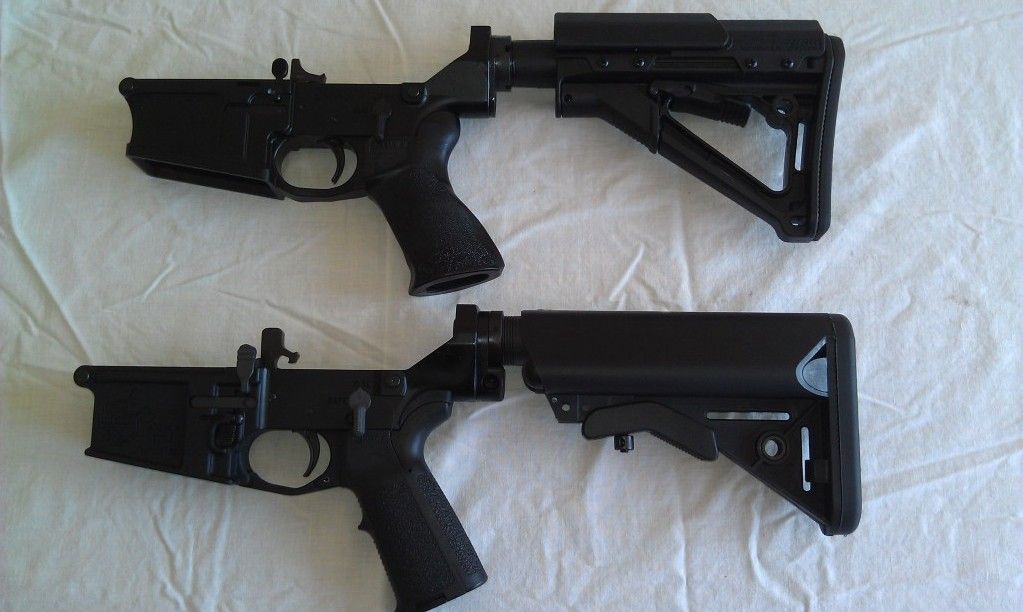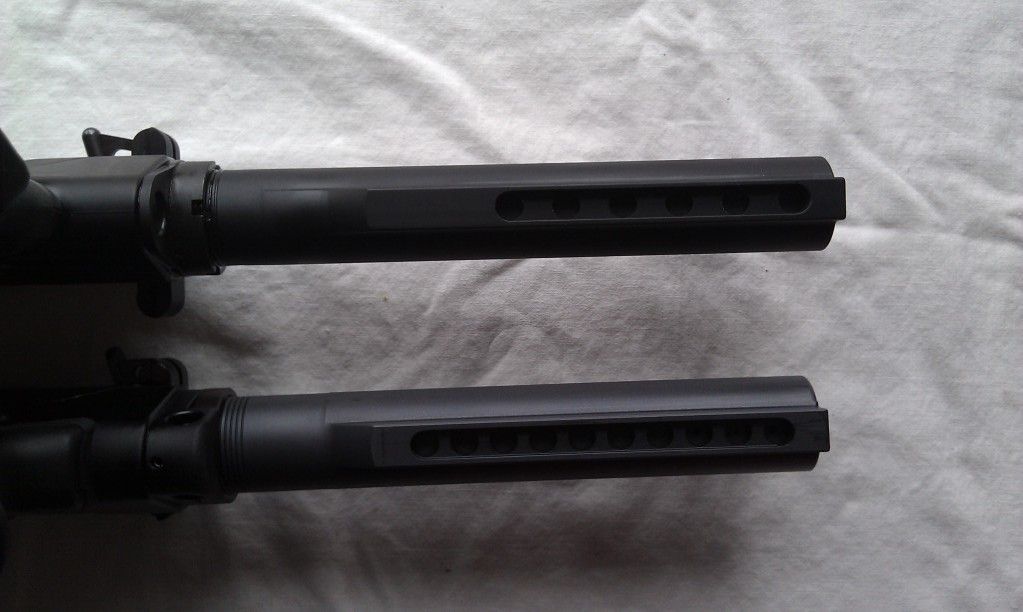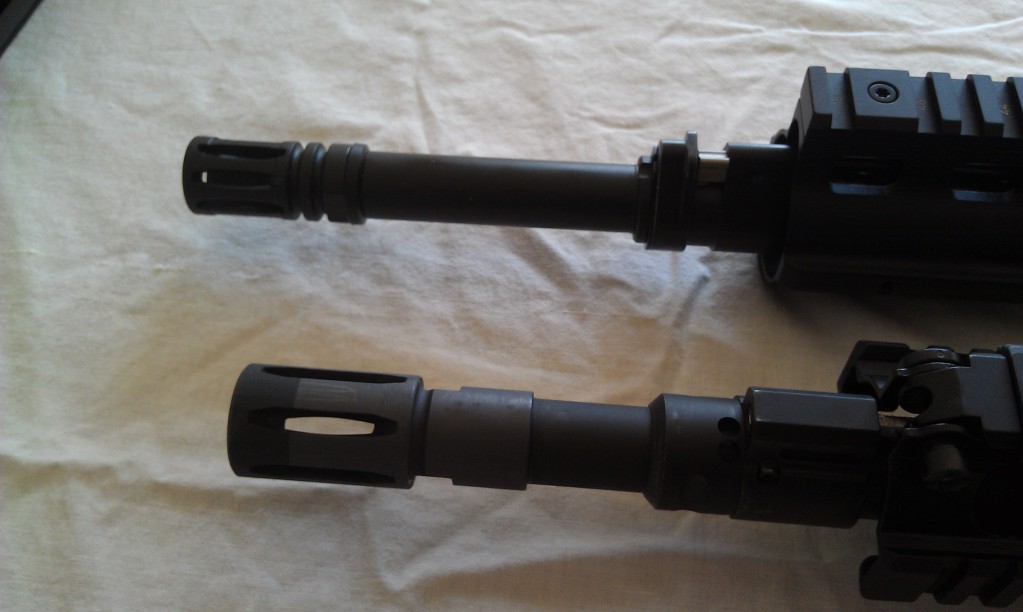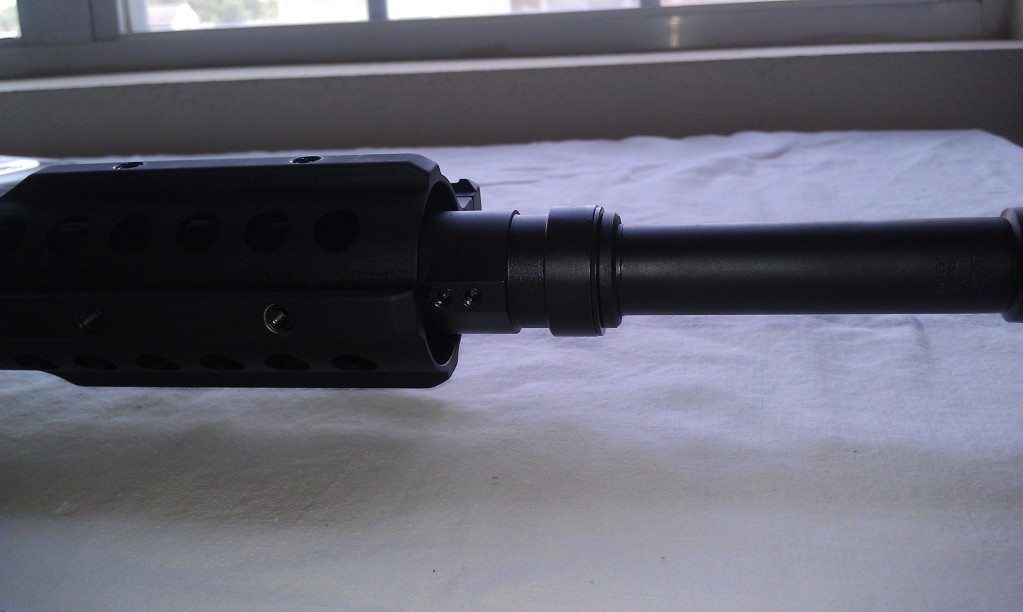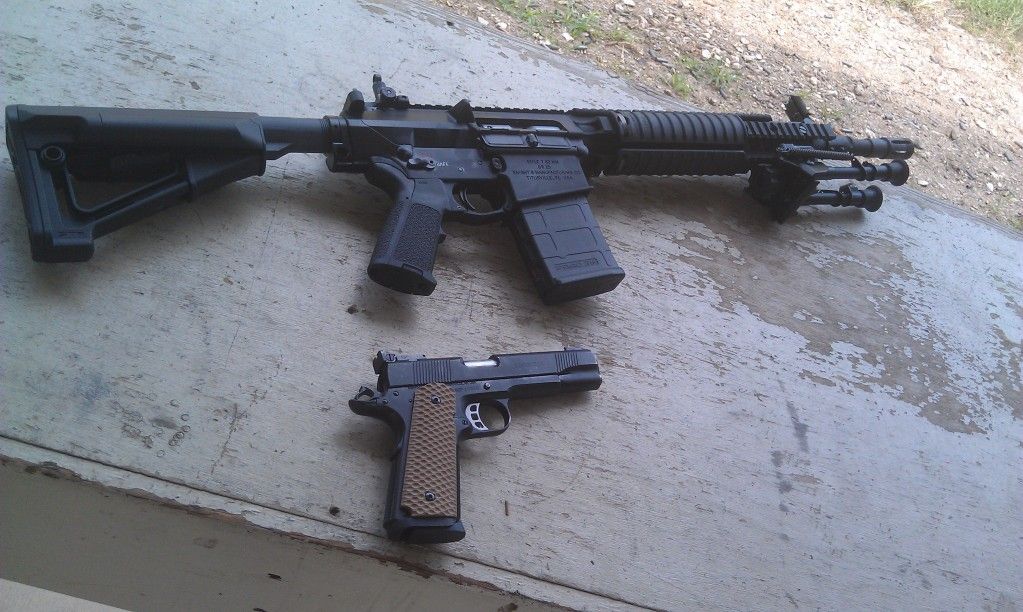I'm going to preface this with the following note. I'm not in an industry where I carry a weapon every day, kick in crack house doors at o'dark-thirty, nor did I sleep in a Holiday Inn Express last night. My background is in test engineering and validation of heavy equipment, and this overview reflects that. If this oversteps my lane, please trash this thread. This document is intended to establish a baseline overview of the SR 25 EC, and provide additional information on this rifle to interested parties.
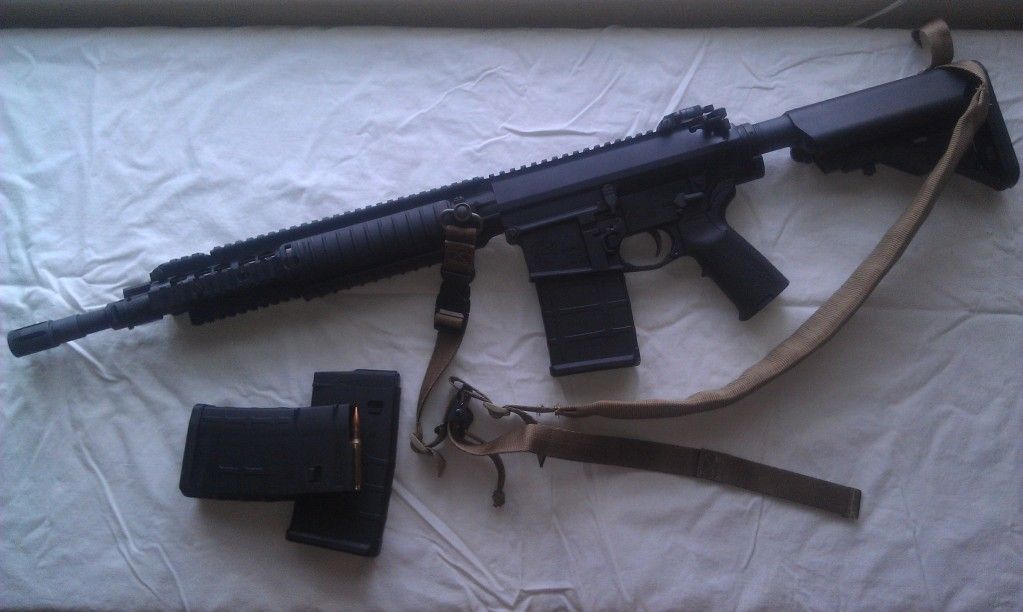
I recently purchased a Knights Armament SR 25 EC (KAC P/N: 30365) from an online retailer. This rifle was selected as it contained all the features I was looking for, at a reasonable price. After shipping, and FFL Transfer, the total expenditure was $3635. Upon receipt, the case contained the rifle, a 0-600m micro rear sight, (KAC P/N: 25650) 1 20 round KAC 7.62 magazine, a pair of QD Sling studs, a rail mounted QD socket (KAC P/N: 98720), and a packet containing a test target, a 25m Zeroing target, and fairly comprehensive Owner Operator Manual (OMM) for the M-110. A quick inspection was undertaken before transfer to verify the item was as ordered.
After getting home, and reading the OMM, (Yes, I read the OMM, all 116 pages of it. . .) a functional check was undertaken to verify correct and safe operation. No issues were noted. After the check, a more extensive inspection was performed, the results of which are outlined below.
Initial impressions were favorable. Weight was 9.75 lbs with a Magpul MIAD, Sling mounts, BUIS, and rail panels installed. Overall length is 35.5 inches with stock collapsed. Center of gravity is located approximately 18 inches from the muzzle. I have a 5.56 carbine set up in a similar configuration, (16 inch barrel, rifle length URX2) and a 7.62 mm carbine with similar layout would be beneficial to me for training purposes. The balance is a bit closer to the muzzle on the SR 25, but this is likely due to the heavier profile barrel. 7.62mm PMags were found to insert easily, lock back the bolt, and drop free with no issues. The only real complaint at this point was the complete absence of any lubrication on the rifle. (Rifle was dryer than the Atacama desert.) During the course of the inspection, this was remedied as per the OMM using Slip2000 EWL.
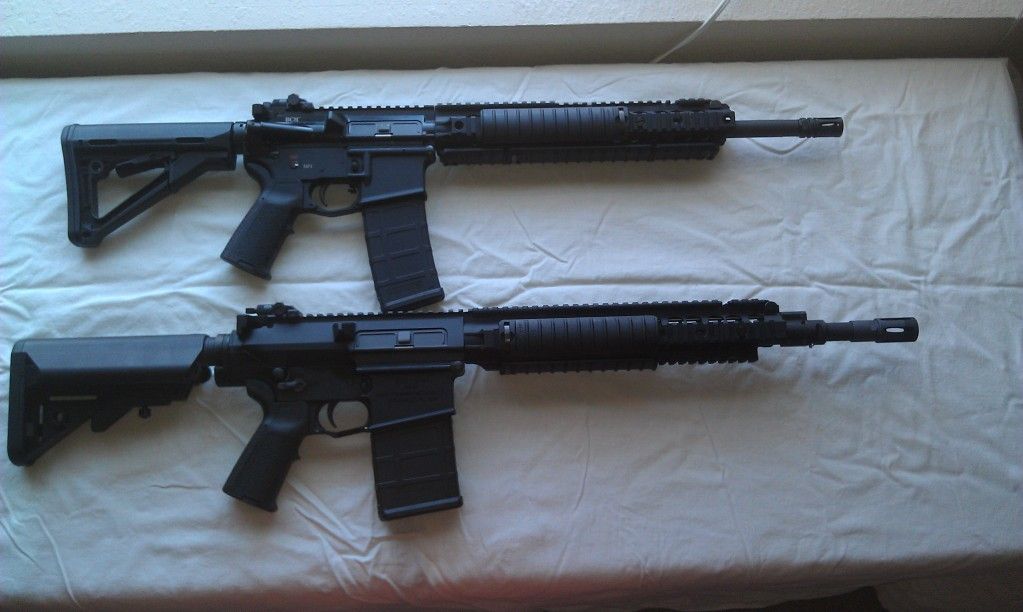
View comparing the SR25EC (bottom) to my 5.56mm carbine. (top)
For location purposes, a datum set must be established. For the purposes of this document, the horizontal datum will run down the centerline of the rifled bore, with the muzzle defined as 0. The vertical datum will run parallel to the magazine feed direction, with the rifle's top rail defined as 0. An angular datum will be defined as looking down the sights with the front sight post defined as the 12 o'clock position.
Starting at the muzzle, the flash hider is an A1 style, 6 slot device similar to the one found on the M-110. The slots are evenly distributed and the unit is compatible with the KAC EMC suppressor. Only other item of note is the coloration on the unit. The first half inch of the Parkerizing is a very dark grey/black, before transitioning to a lighter shade of grey. As per Casey at Lawmen's, this is intentional, as to maintain suppressor alignment as the finish wears. Please note this is a cosmetic issue only, and I presented it in this write up mostly because it piqued my curiosity.
The gas block is a low profile affair with an integrated suppressor collar. This is intended for the EMC Suppressor, and has a pair of 0.125 inch diameter pins protruding approximately 0.188 inches located one each at the 5 and 6 o'clock position. These pins are likely for use in indexing the EMC suppressor. Unknown if the pins are tapped into the barrel. The gas block itself is secured to the barrel using a pair of taper pins at the bottom, and a roll pin at the top.
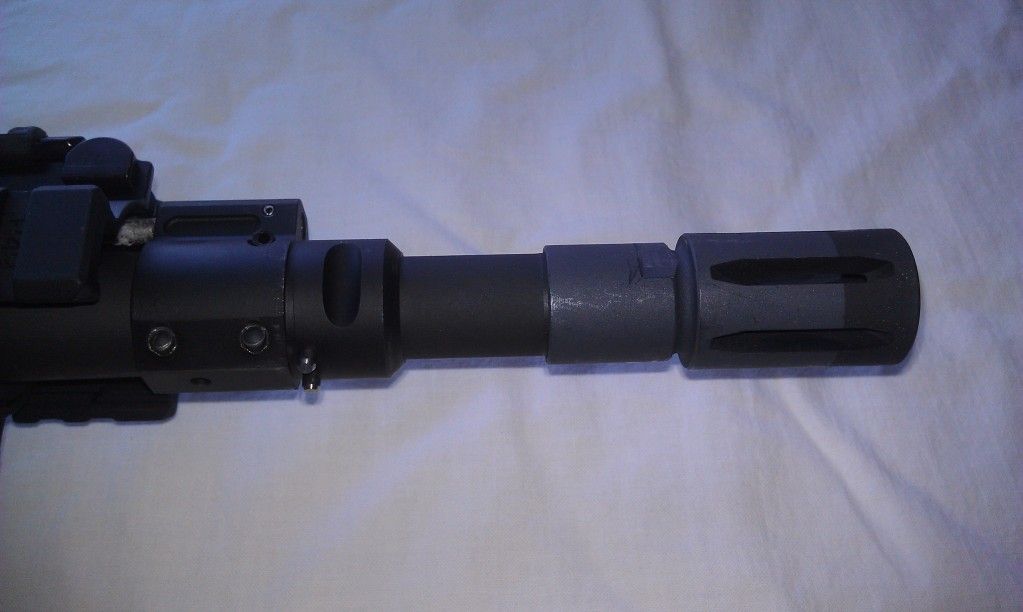
Picture showing the gas block and indexing pins, as well as the FH
Moving on, the railed hand guard is a rifle length SR 25 URX2. (KAC P/N: 24613) I'm a fan of the URX2's, as I find them to be comfortable to use, lightweight, and provide enough rail estate for the various things I bolt onto my rifles. Also, as a sucker for clever overengineering, (Normal people don't understand this concept; they believe that if it isn't broken, don't fix it. Engineers believe that if it isn't broken, it doesn't have enough features yet.) I find the URX2's integrated front sight to be the greatest thing since sliced <span style="text-decoration: line-through">bread</span> bacon. As noted earlier, the lack of lubrication made the operation of the front sight difficult at first. By adding a cut segment of ladder rail cover to the sight, and oiling the mechanism, the front sight is now easy to deploy if needed. If I have one complaint about this rail, it's that it lacks the QD Sockets on the 3 and 9 o'clock rails found on the 5.56mm version. I prefer to run a VTAC sling from the right side of the butt stock to the 9 o'clock rail just in front of the receiver, and on my 5.56 guns I don't need an adaptor to do so. Fortunately, KAC included a rail mounted QD Socket (KAC P/N: 98720) which I installed at this location. The included 11 rib rail covers were left at their 3, 6, and 9 o'clock positions, and a ladder rail cover was installed to protect the top rail. No heat shield was present, possibly due to either the barrel diameter or weight considerations.

View of SR25 EC's 3 o'clock rail. Note lack of QD Socket.
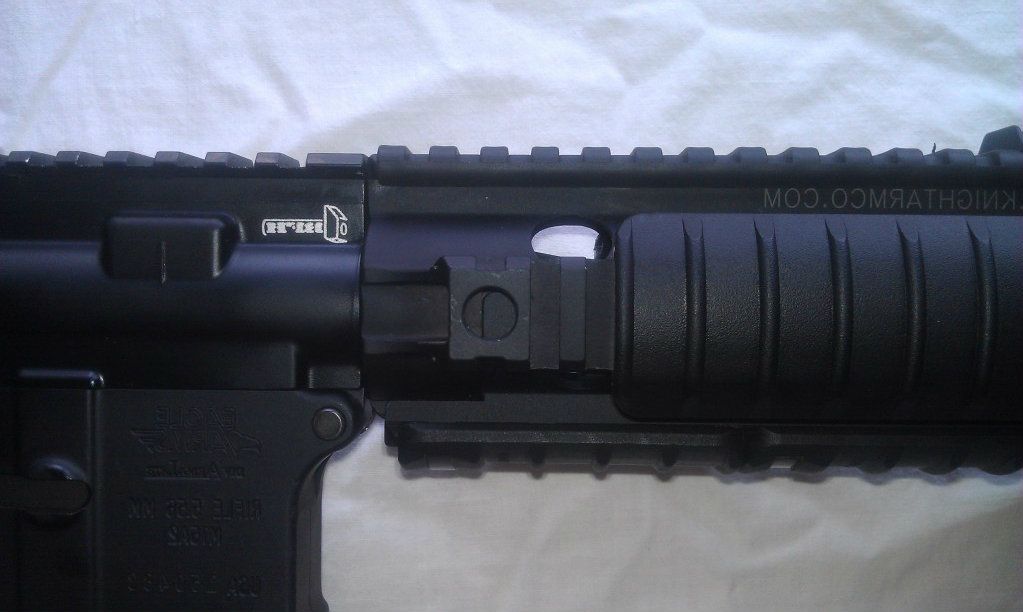
View of 3 o'clock 5.56mm URX2 rail. Note QD Socket.
The barrel is a 16 inch unit with 5R, 1 in 11 inch twist rifling. In front of the gas block, the barrel diameter is 0.725 inches, and behind the gas block and running the full length under the rail, its 0.875 inches with a slight increasing taper as it heads to the chamber. Unlike the earlier EMC, this barrel is not chrome lined, nor does it possess the dimpling under the rail. I'm giving some consideration to sending the barrel off to Marvin Pitts to work his dimpling magic on, just to see if that will shift the center of gravity back to better match my 5.56mm gun, as well as shave a little bit of weight off. Gasport is located approximately 3.125 inches back from the crown, 4.75 inches back from the muzzle.
Next, the upper receiver is a pretty standard looking A4 style. It features an integrated brass deflector, but no forward assist. The charging handle latch notch is cut on both sides, suggesting that there may be a mirrored charging handle for southpaws at some point. The ejection port and dust cover are noticeably larger than expected, measuring in at 0.875 inches tall, and 3.5 inches long. Dust cover is one piece, and functions normally. The upper receiver and URX2 rail are timed perfectly, with no gap visible. Inspection with a straight edge shows that the top rails on both the URX2 and the upper are aligned.

View of right side of upper receiver. Note charging handle notch, and large ejection port door.
The charging handle is a Knight's Armament in house design using Gasbuster features licensed from PRI to redirect blowback from the shooter's eyes and face. All edges are nicely blended, and with no sharp corners. I was expecting this to be easier to operate with my weak side hand, but the latch doesn't seem to protrude far enough, nor the knurling aggressive enough to reliably facilitate the one handed palm slap method I prefer. I'll probably pick up a BCM Gunfighter and perform the Permatex mod to it soon as a replacement.
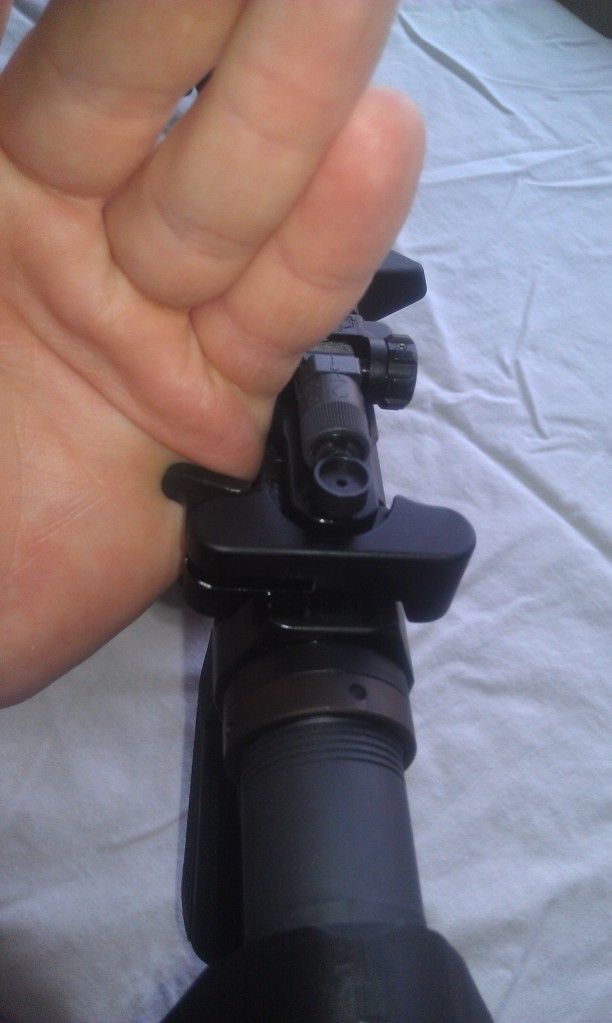
KAC 'Gasbuster' while I try to charge it one handed.

5.56mm Gunfighter using the same technique.
The bolt carrier is a massive affair compared to the AR15's unit. The only tool marks noted on the entire rifle were on the charging handle shelf in front of the gas key. Not a big deal with respect to function or form, but fairly impressive for a production rifle. The gas key was nicely staked. Again, going back to the whole 'overengineering' thing, I found the captive firing pin retaining pin to be a neat bit of human engineering on Knight Armament's part. Otherwise, the only other difference from an AR15 is that during assembly and disassembly, the cam pin is inserted without rotating it to align the firing pin hole.
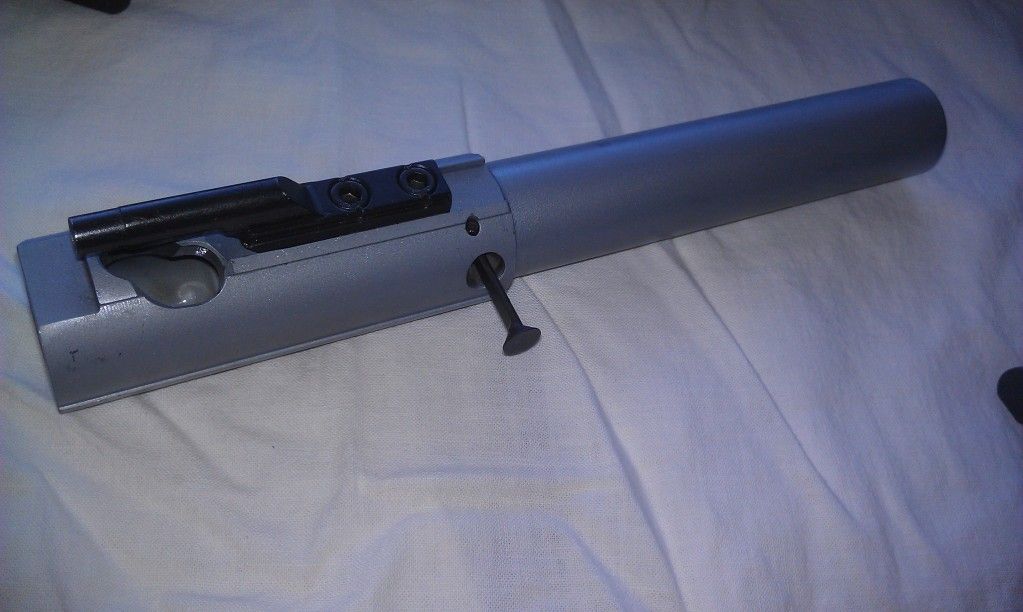
View of bolt carrier demonstrating the captive firing pin retaining pin.
The bolt is also hard chromed for ease of cleaning. Fitted with a massive extractor and ejector, I don't think there's be much issue with extraction. The bolt lugs appear to be rounded and chamfered, and bring to mind the SR15's E3 style bolt. Also interesting was the gas ring, which appears to be a one piece metal seal with a stepped gap cut into it to prevent gas leakage when installed in the bolt.
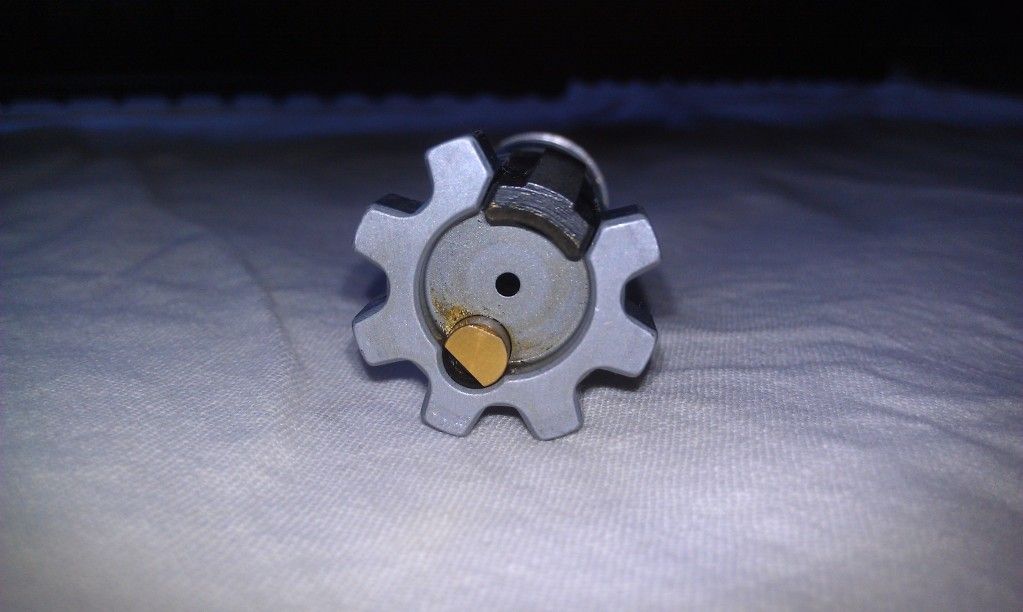
View of bolt. Note ejector and bolt lugs.

I recently purchased a Knights Armament SR 25 EC (KAC P/N: 30365) from an online retailer. This rifle was selected as it contained all the features I was looking for, at a reasonable price. After shipping, and FFL Transfer, the total expenditure was $3635. Upon receipt, the case contained the rifle, a 0-600m micro rear sight, (KAC P/N: 25650) 1 20 round KAC 7.62 magazine, a pair of QD Sling studs, a rail mounted QD socket (KAC P/N: 98720), and a packet containing a test target, a 25m Zeroing target, and fairly comprehensive Owner Operator Manual (OMM) for the M-110. A quick inspection was undertaken before transfer to verify the item was as ordered.
After getting home, and reading the OMM, (Yes, I read the OMM, all 116 pages of it. . .) a functional check was undertaken to verify correct and safe operation. No issues were noted. After the check, a more extensive inspection was performed, the results of which are outlined below.
Initial impressions were favorable. Weight was 9.75 lbs with a Magpul MIAD, Sling mounts, BUIS, and rail panels installed. Overall length is 35.5 inches with stock collapsed. Center of gravity is located approximately 18 inches from the muzzle. I have a 5.56 carbine set up in a similar configuration, (16 inch barrel, rifle length URX2) and a 7.62 mm carbine with similar layout would be beneficial to me for training purposes. The balance is a bit closer to the muzzle on the SR 25, but this is likely due to the heavier profile barrel. 7.62mm PMags were found to insert easily, lock back the bolt, and drop free with no issues. The only real complaint at this point was the complete absence of any lubrication on the rifle. (Rifle was dryer than the Atacama desert.) During the course of the inspection, this was remedied as per the OMM using Slip2000 EWL.

View comparing the SR25EC (bottom) to my 5.56mm carbine. (top)
For location purposes, a datum set must be established. For the purposes of this document, the horizontal datum will run down the centerline of the rifled bore, with the muzzle defined as 0. The vertical datum will run parallel to the magazine feed direction, with the rifle's top rail defined as 0. An angular datum will be defined as looking down the sights with the front sight post defined as the 12 o'clock position.
Starting at the muzzle, the flash hider is an A1 style, 6 slot device similar to the one found on the M-110. The slots are evenly distributed and the unit is compatible with the KAC EMC suppressor. Only other item of note is the coloration on the unit. The first half inch of the Parkerizing is a very dark grey/black, before transitioning to a lighter shade of grey. As per Casey at Lawmen's, this is intentional, as to maintain suppressor alignment as the finish wears. Please note this is a cosmetic issue only, and I presented it in this write up mostly because it piqued my curiosity.
The gas block is a low profile affair with an integrated suppressor collar. This is intended for the EMC Suppressor, and has a pair of 0.125 inch diameter pins protruding approximately 0.188 inches located one each at the 5 and 6 o'clock position. These pins are likely for use in indexing the EMC suppressor. Unknown if the pins are tapped into the barrel. The gas block itself is secured to the barrel using a pair of taper pins at the bottom, and a roll pin at the top.

Picture showing the gas block and indexing pins, as well as the FH
Moving on, the railed hand guard is a rifle length SR 25 URX2. (KAC P/N: 24613) I'm a fan of the URX2's, as I find them to be comfortable to use, lightweight, and provide enough rail estate for the various things I bolt onto my rifles. Also, as a sucker for clever overengineering, (Normal people don't understand this concept; they believe that if it isn't broken, don't fix it. Engineers believe that if it isn't broken, it doesn't have enough features yet.) I find the URX2's integrated front sight to be the greatest thing since sliced <span style="text-decoration: line-through">bread</span> bacon. As noted earlier, the lack of lubrication made the operation of the front sight difficult at first. By adding a cut segment of ladder rail cover to the sight, and oiling the mechanism, the front sight is now easy to deploy if needed. If I have one complaint about this rail, it's that it lacks the QD Sockets on the 3 and 9 o'clock rails found on the 5.56mm version. I prefer to run a VTAC sling from the right side of the butt stock to the 9 o'clock rail just in front of the receiver, and on my 5.56 guns I don't need an adaptor to do so. Fortunately, KAC included a rail mounted QD Socket (KAC P/N: 98720) which I installed at this location. The included 11 rib rail covers were left at their 3, 6, and 9 o'clock positions, and a ladder rail cover was installed to protect the top rail. No heat shield was present, possibly due to either the barrel diameter or weight considerations.

View of SR25 EC's 3 o'clock rail. Note lack of QD Socket.

View of 3 o'clock 5.56mm URX2 rail. Note QD Socket.
The barrel is a 16 inch unit with 5R, 1 in 11 inch twist rifling. In front of the gas block, the barrel diameter is 0.725 inches, and behind the gas block and running the full length under the rail, its 0.875 inches with a slight increasing taper as it heads to the chamber. Unlike the earlier EMC, this barrel is not chrome lined, nor does it possess the dimpling under the rail. I'm giving some consideration to sending the barrel off to Marvin Pitts to work his dimpling magic on, just to see if that will shift the center of gravity back to better match my 5.56mm gun, as well as shave a little bit of weight off. Gasport is located approximately 3.125 inches back from the crown, 4.75 inches back from the muzzle.
Next, the upper receiver is a pretty standard looking A4 style. It features an integrated brass deflector, but no forward assist. The charging handle latch notch is cut on both sides, suggesting that there may be a mirrored charging handle for southpaws at some point. The ejection port and dust cover are noticeably larger than expected, measuring in at 0.875 inches tall, and 3.5 inches long. Dust cover is one piece, and functions normally. The upper receiver and URX2 rail are timed perfectly, with no gap visible. Inspection with a straight edge shows that the top rails on both the URX2 and the upper are aligned.

View of right side of upper receiver. Note charging handle notch, and large ejection port door.
The charging handle is a Knight's Armament in house design using Gasbuster features licensed from PRI to redirect blowback from the shooter's eyes and face. All edges are nicely blended, and with no sharp corners. I was expecting this to be easier to operate with my weak side hand, but the latch doesn't seem to protrude far enough, nor the knurling aggressive enough to reliably facilitate the one handed palm slap method I prefer. I'll probably pick up a BCM Gunfighter and perform the Permatex mod to it soon as a replacement.

KAC 'Gasbuster' while I try to charge it one handed.

5.56mm Gunfighter using the same technique.
The bolt carrier is a massive affair compared to the AR15's unit. The only tool marks noted on the entire rifle were on the charging handle shelf in front of the gas key. Not a big deal with respect to function or form, but fairly impressive for a production rifle. The gas key was nicely staked. Again, going back to the whole 'overengineering' thing, I found the captive firing pin retaining pin to be a neat bit of human engineering on Knight Armament's part. Otherwise, the only other difference from an AR15 is that during assembly and disassembly, the cam pin is inserted without rotating it to align the firing pin hole.

View of bolt carrier demonstrating the captive firing pin retaining pin.
The bolt is also hard chromed for ease of cleaning. Fitted with a massive extractor and ejector, I don't think there's be much issue with extraction. The bolt lugs appear to be rounded and chamfered, and bring to mind the SR15's E3 style bolt. Also interesting was the gas ring, which appears to be a one piece metal seal with a stepped gap cut into it to prevent gas leakage when installed in the bolt.

View of bolt. Note ejector and bolt lugs.


